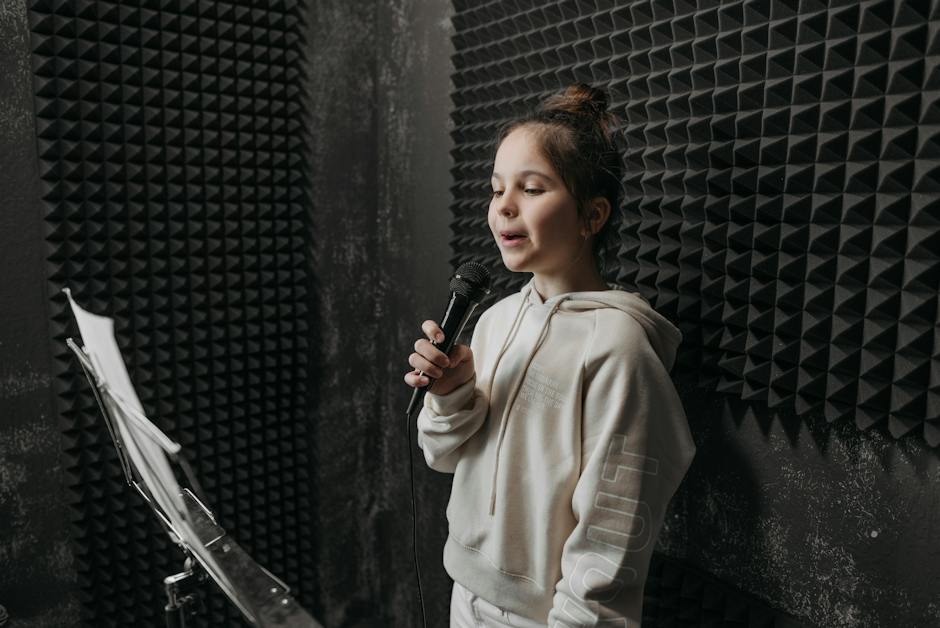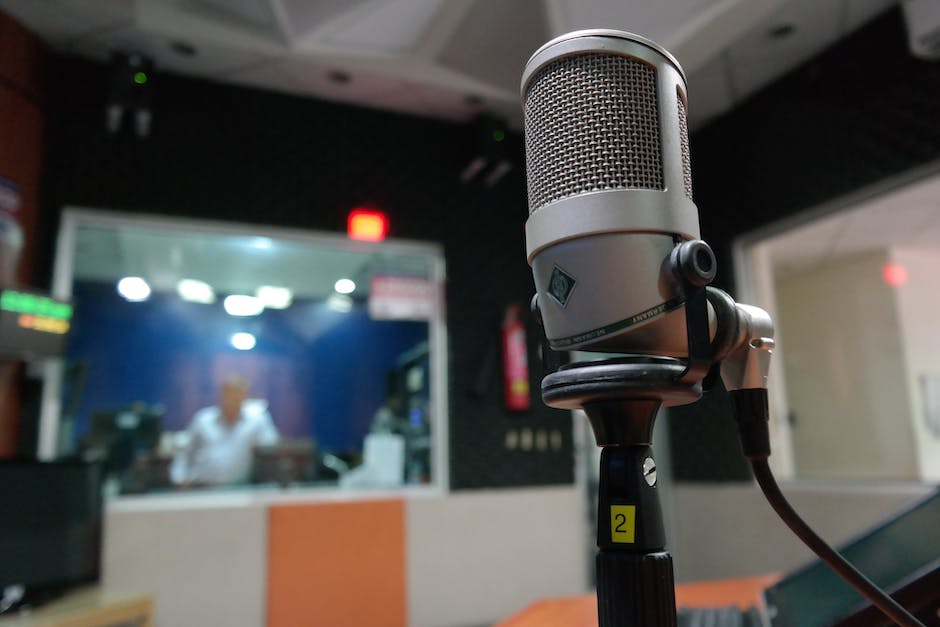In the intricate realm of music production, a brilliantly composed piece can only impress when the quality of its recording is impeccable. Soundproofing, thus, holds paramount importance in the industry, aiding in capturing and delivering the most sonorous tunes. The science behind this imperatively demands attention to grasp its vital role in enhancing recording quality. From understanding the basics of how sound waves navigate and reverberate to realizing the innovations propelling soundproofing technology forward, this wide-ranging exploration promises to enlighten and instruct.
Understand the Fundamentals of Sound Science
The Symbiosis of Sound Science and Soundproofing: Sculpting the Silence in Music Recording
From the cascading symphonies of Mozart to the fiercely rhythmic beats of electronic music, the power music holds over our emotions is undeniable. However, much of the magic lies not just in the melodic harmonies and compelling lyrics but also in the silence – the spaces between the notes that amplify their resonance. This silence, or rather, the control over it, is meticulously crafted in music recording studios across the globe, enabled by an expert understanding of the science of sound and soundproofing techniques.
Sound, fundamentally, is the vibration of air molecules – a fascinating dance between pressure changes. Musically, we perceive these vibrations as the delightful irregular heartbeat of our favorite rock ballad or the haunting whisper of an eerie instrumental piece. Harnessing and manipulating these vibrations with precision is the foundation of modern soundproofing.
At the structural echelon, density and thickness of materials matter. A divine symphony of physics and engineering, soundproofing exploits how sound waves interact with matter. A higher mass per unit area dampens sound waves more effectively, causing them to weaken and ultimately eliminating unwanted noise. Hence, music studios often feature walls made of dense materials such as brick or concrete.
But not all soundproofing strategies are rigid. Some dance with the rhythm of flexibility and motion. This gives birth to decoupling, an ingenious technique to separate one side of a wall from another, altering soundwave paths and resulting in a reduction of sound transmission. Think of it as a winding mountain path compared to a straight, open highway. The journey for sound becomes more arduous, sapping the intensity and creating more controlled conditions for musical perfection.
Moreover, new sound science has led to advanced technology like sound absorbing foam. This material is a virtuoso at converting vibrating sound energy into heat energy that dissipates invisibly, leaving a pristine canvas for musical artistry.
Then there is diffusion – a technique that scatters sound waves, preventing any single frequency from dominating and causing significant interference. Utilizing variously sized and shaped blocks in a recording space, diffusion creates an even soundscape, keeping the narrative progression of music beautifully balanced and crisp.
Ventilation, too, plays its part in this sonorous masterpiece of soundproofing. Without proper ventilation, sound travels uncontrollably, causing maddening echoes and unwanted resonance. Attentive studio design ensures suitable stray sounds are tamed and expelled, providing blessed respite to recording artists and engineers.
In essence, understanding the science of sound allows for the crafting of cosmic cathedrals of music where every strum, beat, or vocal vibration can be captured in immaculate fidelity. Like an unseen conductor, soundproofing techniques guide each note to hit at the right time and place, shaping music as we know it.
As music continues to evolve in complexity and variety, so will the science that supports its creation. Every method that we use for soundproofing is a testament to the profound marriage of music and science, and a dedication to the pursuit of sonic perfection. Silence, it turns out, is not just the absence of sound; it’s the key to the world’s musical treasury.

Importance of Soundproofing for Quality Recording
Music—enduring, transformative, and powerful. As a medium of expression, it evokes emotions and unites cultures, making it enigmatic and universally beloved. But the beauty we perceive audibly comprises several intricate processes and techniques, a crucial component of which is soundproofing. The incorporation of adequate soundproofing measures forms the backbone of high-caliber music tracks, underscoring the power of silent stages that magnify the melody’s impact.
Why, you may ask, is soundproofing pivotal for producing high-quality music tracks? Charting somewhat unfamiliar territory, let’s plunge into the sonic science that makes it all possible.
If music is a painting, silence forms its canvas. Eliminate unwanted noise, and the intricate melodies—each chord progression, each rhythmical pattern—emerge palpably. This, in essence, embodies the value of soundproofing. When recording, any external noise, whether a subtle hum of a machine or the audible chatter seeping in from the streets, can contaminate the sanctity of the melodic environment, marring the quality of the final product.
But silence itself isn’t monolithic—it needs to be tailored, fashioned to cradle specific sounds. That’s where different types of soundproof material come into play. Take mass-loaded vinyl, for instance. Its density and thickness are instrumental in damping sound vibrations and preventing sound leaks. Stacked layers of gypsum, other alloys, and insulating materials add to these efforts, creating an echoing void within which music comes forth in all its purity.
Decoupling is another technique integral to producing stellar music tracks. Decoupling involves creating a mechanical discontinuity in the structure—say, a gap between two walls—which helps in reducing sound transmission, effectively trapping the music within the recording space.
An equally important tool in the music producer’s arsenal is the use of sound-absorbing foam, primarily to convert sound energy into heat, thus diminishing the reflected sound within the room. Close your eyes and listen to a song—can you hear the scale of space being deftly manipulated? You’re hearing the uncanny work of diffusion at play, a technique that ensures an even acoustic landscape, preventing overwhelming clumps of sound and providing every note its space to breathe.
But amid this careful orchestration of silence, don’t forget the factor of ventilation—in many ways, it’s equally vital in controlling sound travel and unwanted resonance, offering a medium for excess sound to escape and maintain sound levels manageable.
Understanding the science of sound that forms the bedrock of creating divine music is, in many ways, an art form. Continuing innovations in music and soundproofing techniques have opened new avenues for rethinking this dimension of music production, advancing genres, and creating experiential harmonic landscapes.
To conclude, soundproofing isn’t just about keeping noises out; it’s a craft involving sound sculpting and space manipulation. When perfected, it can harness the power of the sound to bring music to life, ensuring every crescendo, every pitch, every rhythm, and every melody stands out, untainted by unwanted noise and echo. Audio purity and crisp reproduction of sound lead to high-quality music tracks—thus, singing the song of soundproofing!

The Art and Technique of Soundproofing
Bridging the Gap between Artistry and Acoustics: The Invisible Hands of Soundproofing
A dance of decibels takes place in the silent corners of recording studios, where the beating heart of music is given life. Whether it is a soulful ballad or a high-octane rock anthem, each note being recorded is not just an emanation of sound, but a symphony of science. This is the domain of soundproofing.
One of the many complexities of recording studios is the establishment of sound isolation. Beyond cancelling unwanted noise, sound isolation shapes and gives form to the ambiances that uphold the spirit of a piece. Similarly to how a marble sculpture needs air around it to let its beauty be seen, a musical work needs silence to let its beauty be heard.
Creating spaces of controlled silence depends on the method named isolation. Practically, isolation means creating barriers for sound, using solid, dense materials. Not everything rests on the solidity of the barrier, though. Any small holes or gaps in the construction could creatively be dubbed as “sonic highways”, serving as unintended passageways for sound waves to travel through. Therefore, the sealing details are crucial. Innovative silent doors, windows, and even ceiling tiles are incorporated to prevent those surprising sonic leaks.
Even the floor matters. Raised floors and floating floors can be utilized to create an added barrier, particularly beneficial to keep the lower frequency sounds, like a pulsating bass line or a powerful kick drum, in check.
It’s not only external sound we seek to control. Internally reflected sound, also known as reverberation, should also be managed to avoid an echoic recording. This is where bass traps, absorbers that significantly reduce the reflections of low-frequency sound, come into play. By placing them strategically around the corners of the room where most reflected sound is likely to pool, they ensure a space conducive for purer, clearer sound.
Among the buzz of studio lights and the web of cables, science and music continue their unceasing dance. However, we can’t forget ventilation. Operating equipment and inspired musicians both tend to generate heat. Conventional ventilation, though, is often not soundproof. Ducts end up being the perfect channel for sound waves, forming the opposite of the desired silence. Custom solutions, like sound baffling air vents, have to be employed to ensure comfort doesn’t compromise acoustics.
While all those technicalities might seem overwhelming, remember that they’re just tools in the hands of the ultimate goal – creating music that can move, heal and inspire. Silence and sound should dance together, creating the rhythm of the music we love. The right soundproofing technique will accurately capture the fullness of an artist’s expression, from the roaring crescendos to the whispering solos. It lets the music speak for itself, without the hindrance of unintended sonic intrusions. An appropriately soundproofed studio would not merely contain bisounds, but it would transform itself into the conductor of a harmonious performance.
Soundproofing is an essential partner in the journey to create music that transcends the confines of the studio and ventures into the hearts and souls of listeners. It’s an uncelebrated, yet integral player of the symphony – the silent partner to the art of music. Exceptional soundproofing has the power to elevate a musical tale from simply being heard to truly being felt. It is, in essence, the invisible maestro commanding the symphony of sound and silence.

Innovations and Advances in Soundproofing
Delving deeper into the theatrical stage of soundproofing, the exploration has become a virtual symphony of innovation and technological advancements. On this crucible of scientific inquiry and musical passion, progress strides in even more exciting tempo, bringing a medley of new soundproofing techniques and materials to the limelight. Truly, in this realm where silence and music entwine in a harmonious dance, every decibel counts, each note rings vital.
Emerging on the forefront of soundproofing, viscoelastic materials have made a grand entrance with their fascinating properties. These marvels have the unique ability to introduce damping into the system, which absorbs and dissipates the kinetic energy of soundwaves, and reduces their magnitude. The science is akin to a thrilling crescendo of a melody; a booming sound transformed into a whispering echo until it’s barely perceptible, creating the perfect blank slate for pure musical expression.
Taking a bow alongside viscoelastic marvels are the mass-loaded vinyl barriers, nonpareil in their class. These high-density, thin materials are pliable, making them supremely versatile and perfect for wrapping around pipes or cables, contributing to a studio’s overall sound neutrality. Think of them as the consistent rhythm section, unobtrusive yet integral, providing the required silent backdrop where the musical notes can harmoniously take center stage.
Then there’s transformational green glue, or viscoelastic adhesive, a genius concoction that converts sound vibrations into heat energy. Applied between two layers of standard construction material, it performs an architectural ballet, helping to reduce noise transmissions significantly. Like a master conductor, green glue orchestrates a serene environment, suppressing unwanted noise and letting the true music shine through.
Resonance-reducing technologies have also been making waves in the soundproofing sphere. There’s an increase in the use of devices like the TMD (tuned mass damper), engineered to shift resonant frequencies and decrease vibration. Imagine a percussionist playing the perfect rhythm to counterbalance and control the resonances, bringing balance and harmony to the sound spectrum.
On a larger scale, the advent of digital modeling programs has revolutionized the field too. From the conceptual stage to the final design of a recording space, acoustic designers harness physics-based simulations to predict the performance of different soundproofing treatments. This technological breakthrough is like having a virtuoso composer arranging each element, ensuring every note will be played perfectly.
At the crossroads of art and science, soundproofing has become a dynamic arena in its own right. Each material, each technique, resonates with the universal language of music, serving passionate artists and mindful audiophiles alike. In the evolving symphony of soundproofing, the journey to orchestrate the perfect harmony between sound and silence reverberates stronger than ever. Indeed, in this modern sonata of silence, music finds its purest expression. True to its ethereal essence, music soothes, electrifies, and unifies—undisturbed.

Delving into the world of soundproofing has proffered insights into its formative science, the monumental difference it makes in producing quality recordings, advanced techniques deployed, and the novel trends that are redefining its future. While soundproofing may seem a mundane, technical aspect, its profound impact on the way we experience music stands undisputed. As the industry continues to evolve, being informed of these trends and techniques will only enrich and elevate the quality of audio we consume. Thus, the sounds we hear will continue to captivate, inspire and move us in ways only well-recorded music can.

Comments.
Currently there are no comments related to this article. You have a special honor to be the first commenter. Thanks!